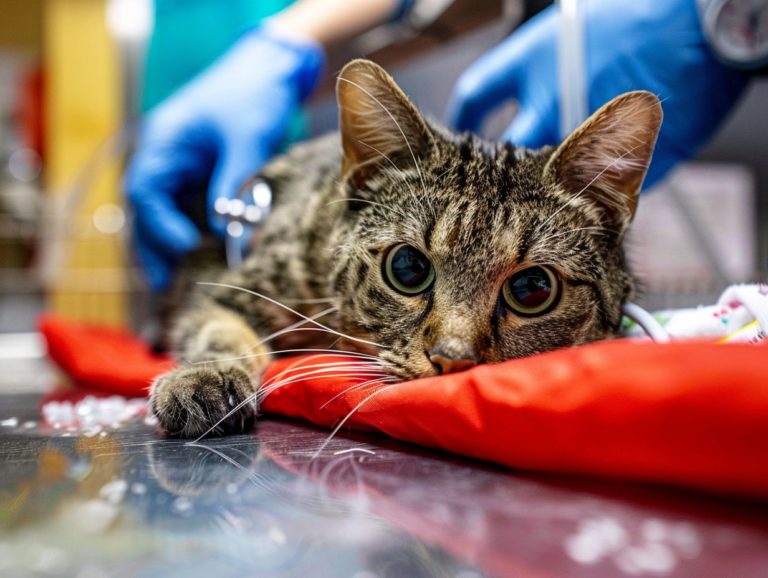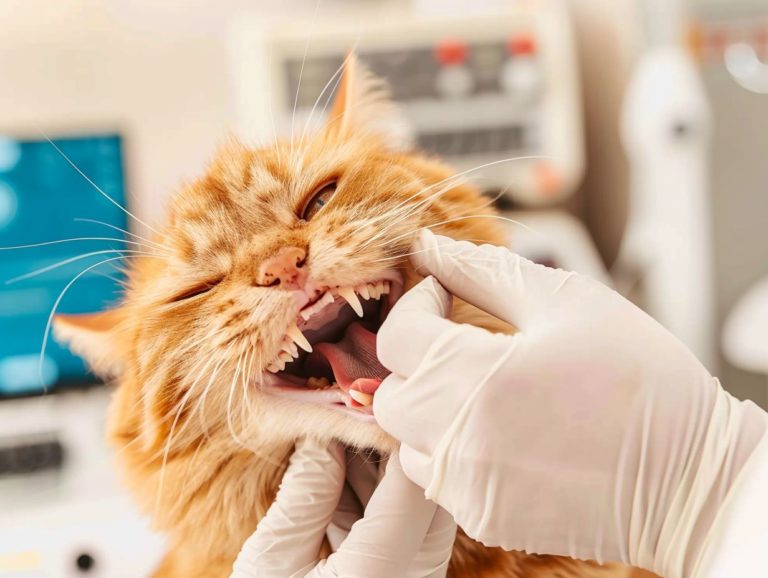Behavioral Therapy Coverage For Cats What You Need To Know
Behavioral therapy for cats is a form of treatment aimed at improving the behaviors of feline pets, addressing issues ranging from aggression to inappropriate elimination to separation anxiety. In some cases, it can also assist in managing medical problems.
This discussion will delve into various aspects of behavioral therapy for cats, including the definition and benefits of this approach, common behavioral problems in cats, techniques utilized in behavioral therapy (such as positive reinforcement), guidance on selecting a suitable behavioral therapist for your cat, as well as considerations regarding the cost and insurance coverage of behavioral therapy for cats.
Key Takeaways:

Understanding Behavioral Therapy for Cats
Behavioral Therapy for Cats involves treating behavioral issues in feline pets through specialized training sessions and interventions. Pet owners seek this treatment to enhance their cat’s behavior and overall quality of life. The therapy requires active involvement from pet owners in identifying and modifying their cat’s undesirable behaviors, such as aggression, anxiety, and inappropriate elimination.
Collaborating with skilled animal behaviorists or trainers, owners devise tailored strategies to promote positive behavior and discourage negative behavior. Regular training sessions enable cats to learn new skills and behaviors, fostering a peaceful home environment and strengthening the bond between owners and their feline companions. The benefits of behavioral therapy extend beyond behavior correction to include a deeper understanding of cats’ needs and communication, leading to long-term behavioral improvements.
What is Behavioral Therapy?
Behavioral therapy for cats encompasses a range of techniques and approaches aimed at modifying feline behavior patterns to address various issues. Tailored to each pet’s specific needs, this therapy involves structured training sessions. The primary goal of behavioral therapy for cats is not only to address behavioral problems but also to cultivate a healthy relationship between the owner and their cat.
Many pet insurance policies include coverage for behavioral therapy, recognizing its benefits for the overall well-being of the pet. Cat owners play a crucial role in the therapy process by actively participating, consistently implementing learned techniques at home, and ensuring that positive behaviors are consistently rewarded to create a supportive environment for their feline companions.
Benefits of Behavioral Therapy for Cats
The benefits of behavioral therapy for cats extend beyond behavior modification, enhancing the quality of life for both pets and pet owners. Effective behavioral training can strengthen the bond between cats and their human companions.
This form of therapy addresses issues such as aggression, anxiety, and destructive behaviors in cats, resulting in a calmer and happier pet. By understanding the underlying reasons for these behaviors, pet owners can create a more empathetic and supportive environment for their feline friends.
Behavioral therapy emphasizes the use of positive reinforcement techniques, which not only enhance the cat’s behavior but also foster trust and communication between the pet and owner. This improved communication cultivates a deep mutual understanding and respect, fostering a harmonious coexistence.
Improving Cat Behavior and Quality of Life
Behavioral therapy for cats is a crucial tool for enhancing feline behavior and improving the overall health and quality of life of cats. This therapy focuses on treating and resolving behavioral issues through targeted training interventions, helping cats overcome various problems and lead happier, healthier lives.
It aims to pinpoint the underlying causes of a cat’s behavioral issues, such as aggression, anxiety, or litter box problems, and to implement specific strategies for improving and reshaping these behaviors. By collaborating closely with pet owners, behavioral therapists create personalized behavior modification plans tailored to the unique needs of each cat.
This approach enables pet owners to develop a deeper understanding of their feline companions and the behavior change process, ultimately strengthening the bond between them and enhancing owner satisfaction with their pet.
Common Behavioral Issues in Cats
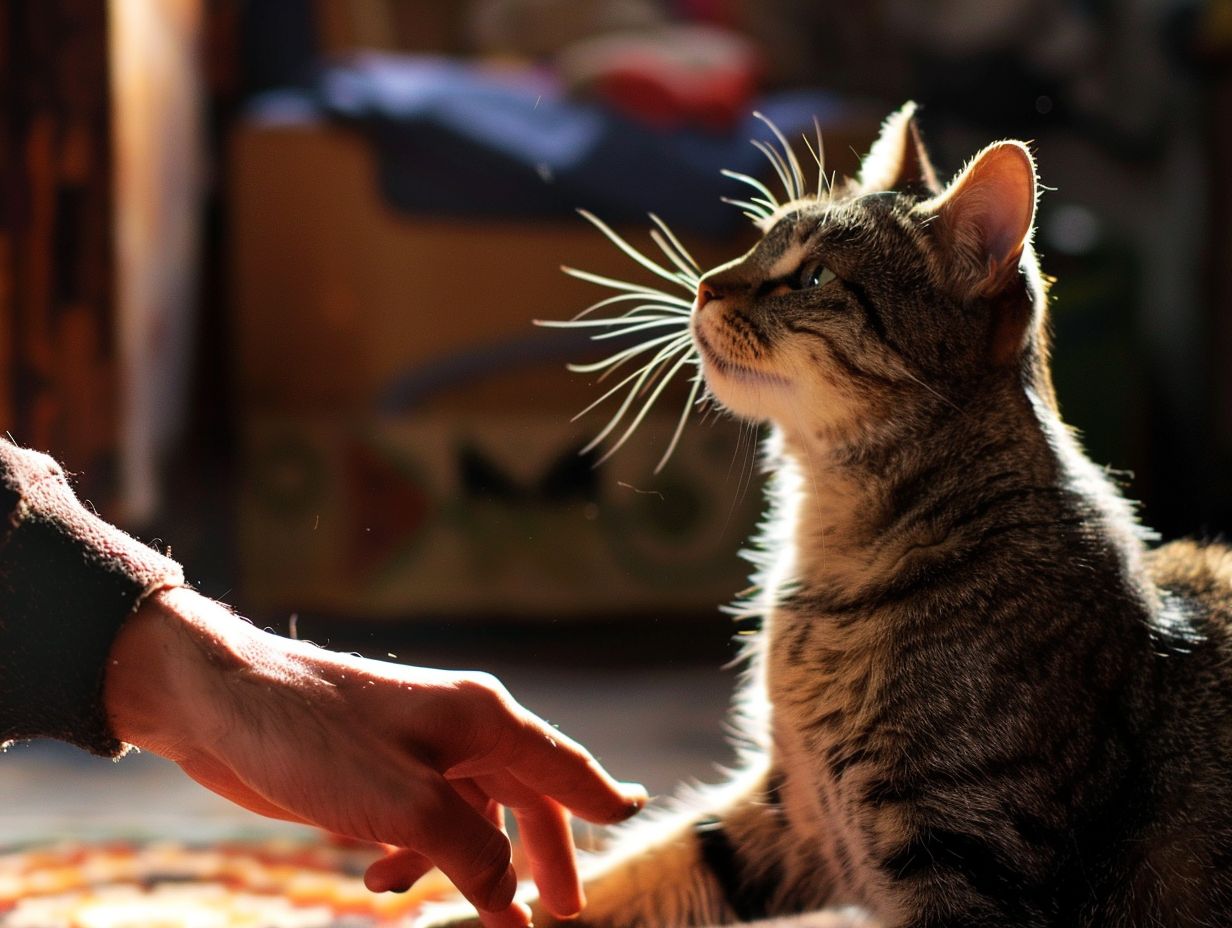
Common Behavioral Issues in Cats encompass a wide range of problems, including but not limited to aggression, separation anxiety, and obedience issues. These behavioral concerns often necessitate specialized training and interventions. Aggression in cats may manifest as hissing, scratching, or biting, while separation anxiety can lead to excessive meowing, destructive behavior, or inappropriate urination. Obedience issues in cats may manifest as challenges with litter training, disobedience to commands, or resistance to routines. Behavioral therapy and tailored training sessions are crucial for addressing these specific issues to enhance the behavior and emotional well-being of cats. Pet owners may find pet insurance coverage beneficial in offsetting the costs of behavioral consultations and treatments.
Identifying and Addressing Problem Behaviors
Identifying and addressing problem behaviors in cats is essential for providing effective behavioral therapy. The first step in implementing appropriate and targeted training solutions is to identify the underlying causes of a cat’s behavior. Common problem behaviors in cats include excessive scratching, inappropriate urination, aggression, and excessive meowing, which can stem from reasons such as stress, boredom, or medical conditions. These behaviors not only negatively impact the well-being of the cat but can also lead to challenges and frustrations for owners, as well as a weakened human-animal bond. Tailored training to modify these behaviors is crucial for enhancing both the cat’s quality of life and the relationship between the cat and its owners.
Behavioral Therapy Techniques for Cats
Behavioral Therapy Techniques for Cats involve the use of positive reinforcement and other specific methods to modify feline behavior, addressing specific behavior issues and enhancing the quality of life for cats.
Positive reinforcement, a foundational and highly effective technique, entails rewarding desirable behaviors to encourage their repetition. By offering rewards like treats or attention when a cat displays positive behaviors, the cat learns to associate the behavior with a favorable outcome.
Behavior modification techniques that do not rely on positive reinforcement are employed in tandem with positive reinforcement methods, focusing on altering undesired behaviors through training and consistency. These techniques are typically implemented by pet owners, who play a crucial role in their successful application.
Pet owners who are consistent, patient, and understanding are essential for the effective implementation of these techniques, as they can help cultivate and reinforce positive behaviors in their cats, fostering a more enriching relationship.
Positive Reinforcement and Other Approaches
The main principles of effective behavioral therapy for cats are Positive Reinforcement and Other Approaches. Focusing on positive reinforcement techniques can help shape desired behaviors and decrease unwanted behaviors in feline pets. By rewarding a cat’s good behavior rather than punishing undesirable ones, a pet owner creates a positive learning atmosphere that leads to positive changes in their cat’s behavior. This approach helps cats associate the desired behavior with a good outcome during training sessions, making them more likely to repeat the behavior.
Other behavioral approaches, such as environmental enrichment and interactive play, can improve a cat’s overall well-being and mental stimulation, leading to a healthier and happier pet-owner relationship.
Choosing a Behavioral Therapist for Your Cat
When selecting a Behavioral Therapist for Your Cat, it is essential to consider both their qualifications and compatibility. Opt for a certified animal behaviorist or an experienced cat trainer who can effectively address your cat’s behavioral issues. A competent behavioral therapist should possess a deep understanding of feline behavior, enabling them to customize their approach to suit your cat’s specific needs.
Professionals holding certifications from reputable organizations are preferred as it demonstrates their dedication to ongoing education and growth in the field. Inquire about their experience working with cats of similar temperaments or facing similar issues to ensure they can offer effective intervention strategies. Keep in mind that the quality of the therapeutic relationship plays a crucial role in achieving successful outcomes in modifying your cat’s behavior.
Qualifications and Finding the Right Fit
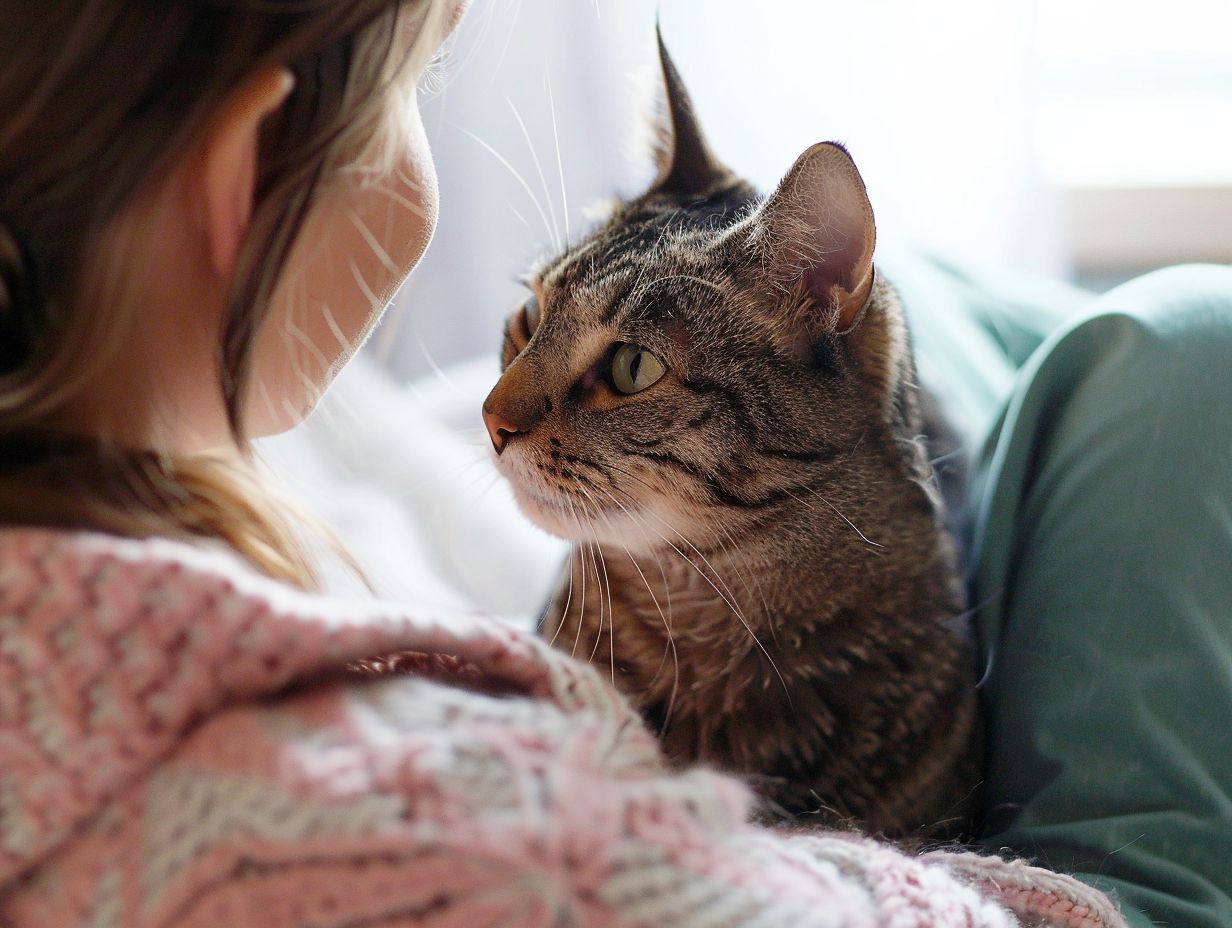
Qualifications and finding the right fit in a behavioral therapist are crucial for the success of therapy. Ensure that the therapist has the necessary qualifications and experience to effectively treat your cat’s behavior. This includes having a comprehensive understanding of common behavioral issues in cats such as aggression, anxiety, and inappropriate elimination, as well as specialized training in animal behavior modification techniques.
When selecting a therapist, assess their general approach and methodology to determine if it aligns with your cat’s needs. Compatibility is also key, as a good match will enhance communication and trust among the therapist, your cat, and yourself. Look for a therapist who prioritizes building a positive relationship with your cat while offering effective behavior modification strategies.
Cost and Coverage of Behavioral Therapy for Cats
The cost and coverage of behavioral therapy for cats vary by pet insurance provider and the specific policies offered, making this section important for pet owners seeking to utilize behavioral treatments for their cats by examining the financial aspects of therapy.
Pet insurance coverage stands out as a significant way to offset the costs of behavioral therapy for cats, with some insurance plans offering coverage for these treatments while others may necessitate riders or additional premiums for behavioral services. Cat owners are advised to review their insurance policies to grasp the extent of coverage available for behavioral therapy.
Payment options that allow costs to be spread out over time, such as flexible spending accounts or financing plans, can offer a more affordable solution for pet owners. While the initial costs may be significant, the improvements in the cat’s well-being and behavior resulting from behavioral therapy tend to be long-term, providing substantial benefits in the long run.
Insurance Coverage and Payment Options
Insurance Coverage and Payment Options play a crucial role in ensuring access to behavioral therapy for cats. Understanding the insurance coverage regulations associated with pet insurance can help mitigate the expenses of therapy sessions for cats.
Various pet insurance providers offer a range of plans, some of which include coverage for behavioral therapy for cats. It is essential for pet owners to be well-versed in their pet insurance policy to comprehend the extent of coverage provided for these services. Reimbursement procedures may vary among providers, prompting pet owners to retain all receipts and documents pertaining to therapy sessions.
Certain pet insurance providers may facilitate direct billing and payment options with veterinary clinics that administer behavioral therapy for cats. For individuals without pet insurance, financial assistance programs or payment plans offered by veterinary clinics can assist in making therapy more financially feasible.
Frequently Asked Questions
What is Behavioral Therapy Coverage for Cats?
Behavioral therapy coverage for cats refers to the inclusion of treatments for behavioral issues in a cat’s health insurance policy. This can include training, medication, or other forms of therapy to address problem behaviors in cats.
Why is Behavioral Therapy Coverage Important for Cats?
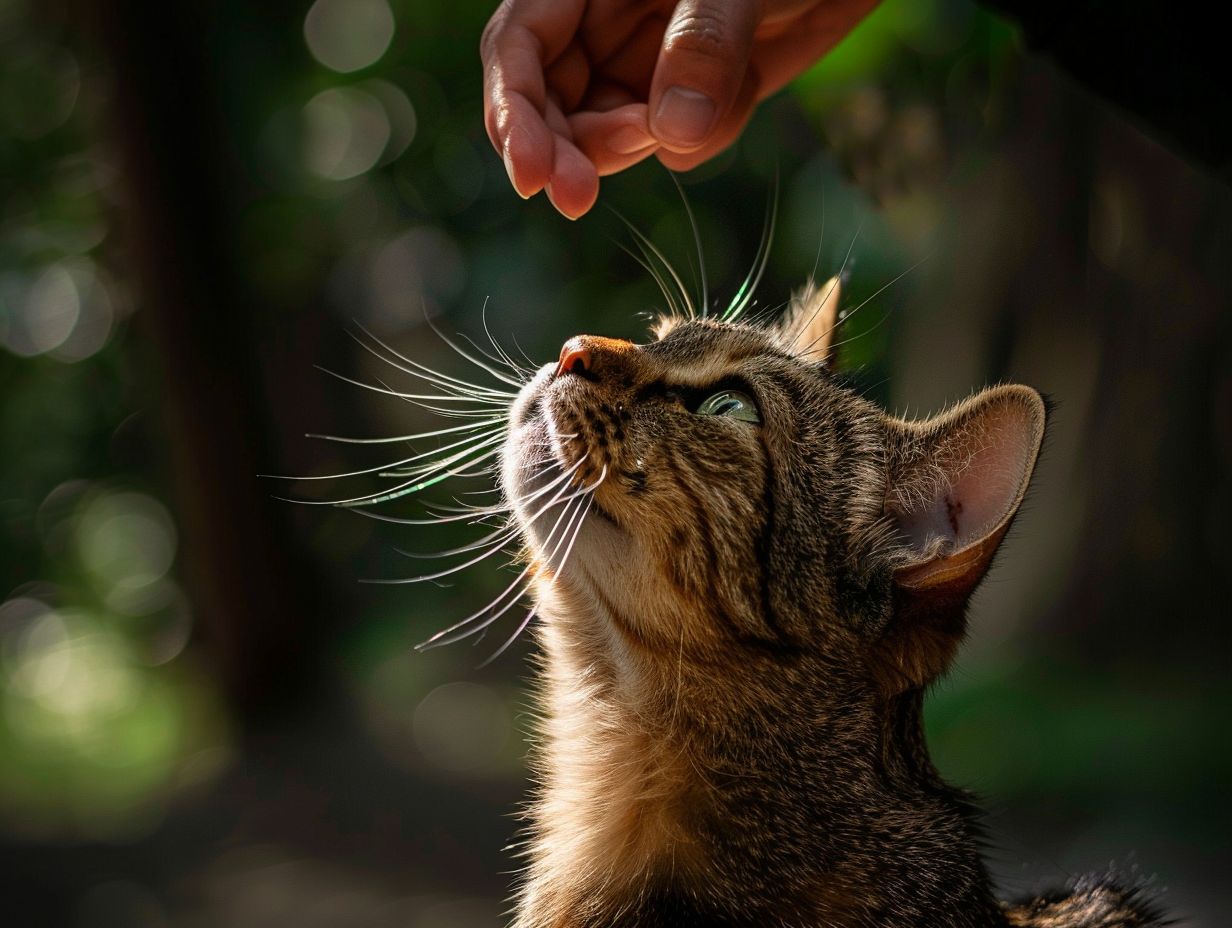
Behavioral issues in cats are common and can greatly impact their quality of life. Having coverage for behavioral therapy can help cat owners afford the necessary treatments to improve their cat’s behavior and overall well-being.
What Types of Behavioral Issues are Covered?
The specific behavioral issues covered may vary depending on the insurance provider, but commonly covered issues include aggression, anxiety, compulsive behaviors, and litter box problems.
Are There Any Exclusions for Behavioral Therapy Coverage?
Some insurance policies may have exclusions for pre-existing behavioral issues or certain breeds that are prone to behavioral problems. It’s important to carefully review the policy to understand what is covered and what is not.
How Do I Get Behavioral Therapy Coverage for My Cat?
You can typically add behavioral therapy coverage to your cat’s existing health insurance policy or purchase a separate behavioral therapy coverage plan. Be sure to research different providers and policies to find the best coverage for your cat’s needs.
Is Behavioral Therapy Covered by All Pet Insurance Companies?
No, not all pet insurance companies offer coverage for behavioral therapy. It’s important to carefully review the policy details and speak with a representative to confirm coverage before purchasing a plan.

